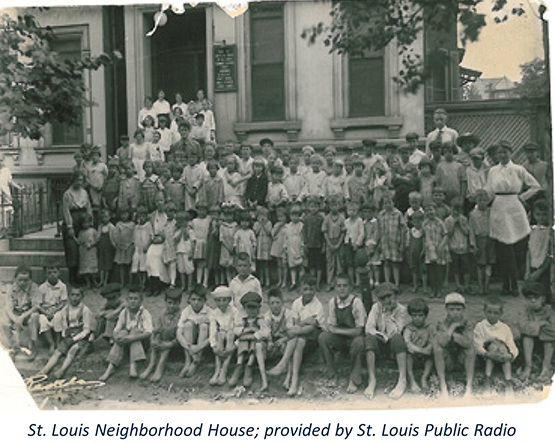Community Music School: Rooted in Settlement Movement’s Vision of Empowerment and Inclusivity
January 25, 2025

The Community Music School (CMS) of Webster University traces its origins to the Settlement Movement, a social reform initiative that took root in the late 19th century with a mission to empower and uplift underserved communities.
Founded on the principles of education, cultural enrichment and community support, CMS stands as a testament to the movement’s lasting influence in urban centers across the United States.
The Settlement Movement began in England in 1884, aiming to bring educated individuals to live and work in low-income, working-class neighborhoods. Their goal was to bridge social divides, offering resources and support to help reduce poverty. By 1886, the idea had spread to the United States, establishing settlement houses in major urban areas like Boston, Chicago and St. Louis. The houses served as beacons of social reform, focusing on providing essential services and educational programs to impoverished communities, which were often densely populated with immigrants.
Former CMS Assistant Director and Registrar, Linda Chickos, who has extensively researched the history of the Settlement Movement, explained that Settlement Movement leaders tried to teach immigrants English, childcare and more while helping them acculturate into American culture. According to Chickos, as these settlement houses evolved, music programs were introduced to meet the cultural and emotional needs of immigrant communities, offering classes in music that fostered a sense of belonging.
The idea of structured music education had a passionate advocate in Edna Lieber, who was actively involved in the Missouri Federation of Music Clubs as chairperson of the Settlement Music Committee. Inspired by the example set by Chicago’s Hull-House, which offered rigorous musical training to immigrant children as a means of cultural assimilation and personal enrichment, the Federation approached Lieber to create a similar program in St. Louis.
With the support of the Missouri Federation of Music Clubs, Lieber launched CMS in 1925. She began teaching a small group of students, later expanding to accommodate a growing number of children through outreach efforts and an expanding faculty. She gained financial and external support from St. Louis Symphony musicians and civic leaders, allowing the program to grow from teaching just a few students to a broader initiative that offered more instruments and attracted more teachers.
In keeping with its mission of inclusivity, lessons were provided at a rate of 25 cents each, a nominal fee, with full scholarships available for students who showed exceptional dedication. Tuition fees for subsidized students were often offset by higher-paying families and local fundraising efforts, making the program sustainable and open to more students.
Today, the CMS continues the effort to make music education accessible with over 35% of students receiving financial assistance through Artistic Merit Scholarships, the McKinley After School Program, Endangered Instruments Awards, discounts and financial aid for low-income families.
The Settlement House program was an important component of the Community Music School’s very beginnings and stands as a reminder of how its ideals of social empowerment, inclusivity and cultural education remain impactful, continuing to serve St. Louis’ community nearly a century later.
Join us in celebrating the CMS Centennial by making a gift to support the next generation of musicians. Your generosity ensures that music education remains accessible for all. Give today.
